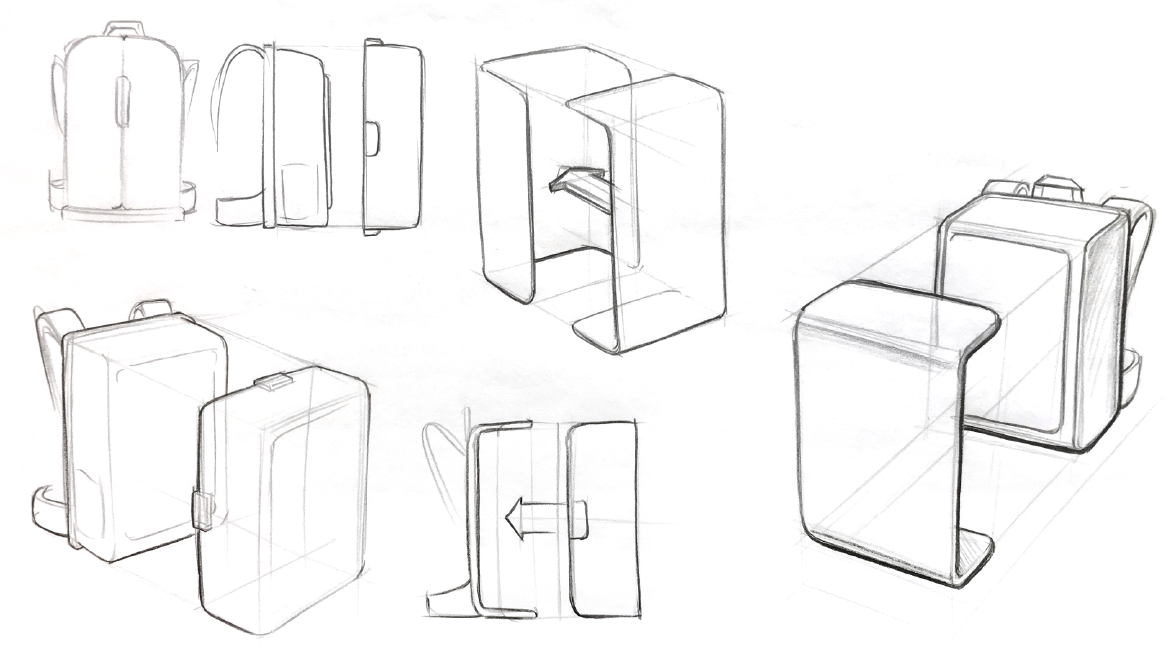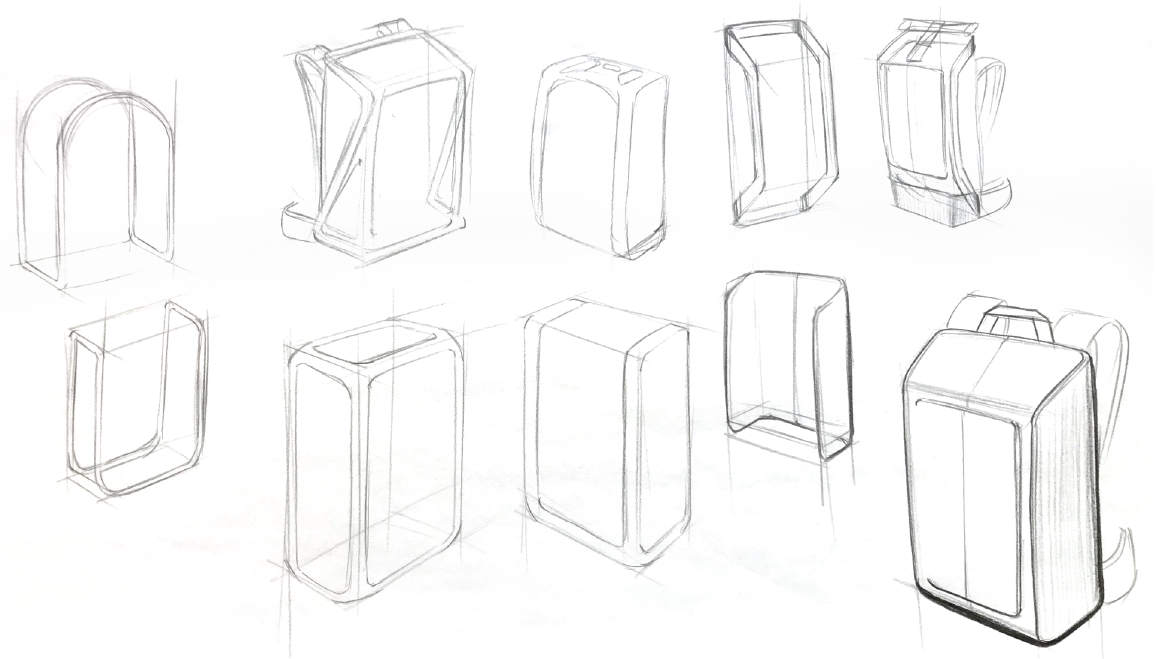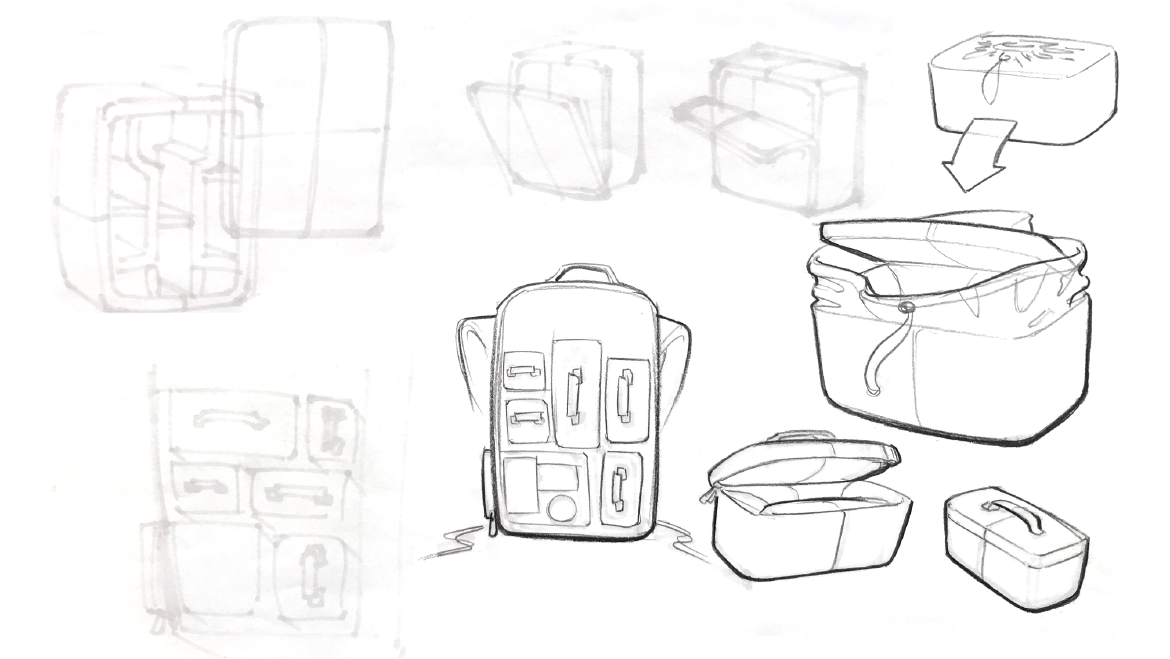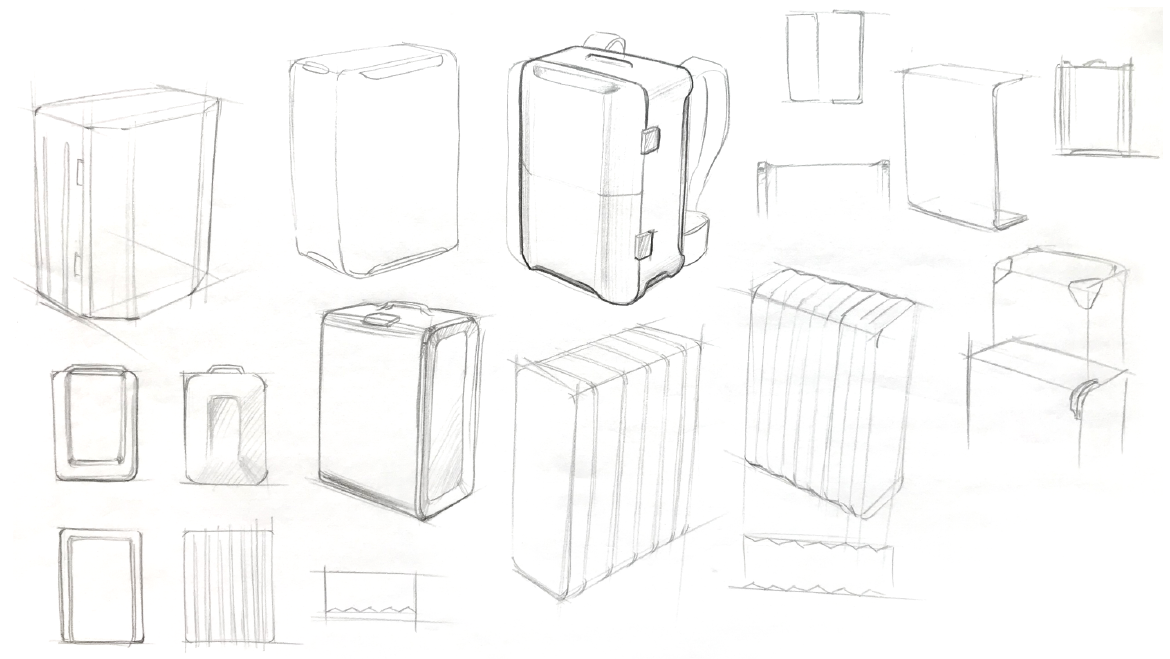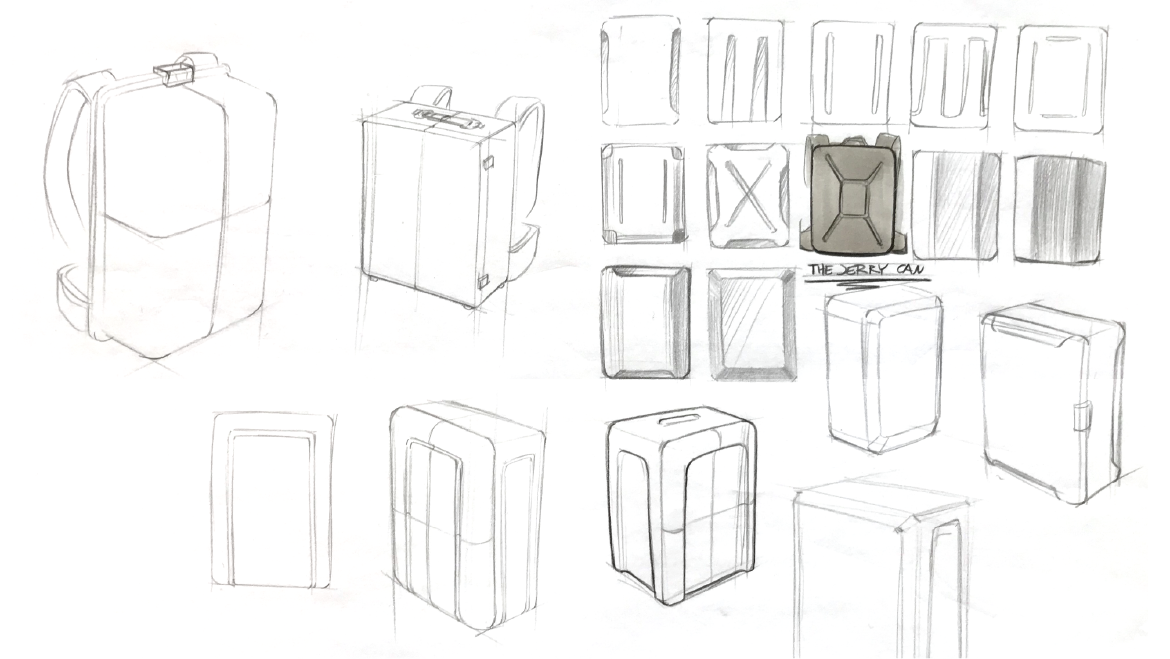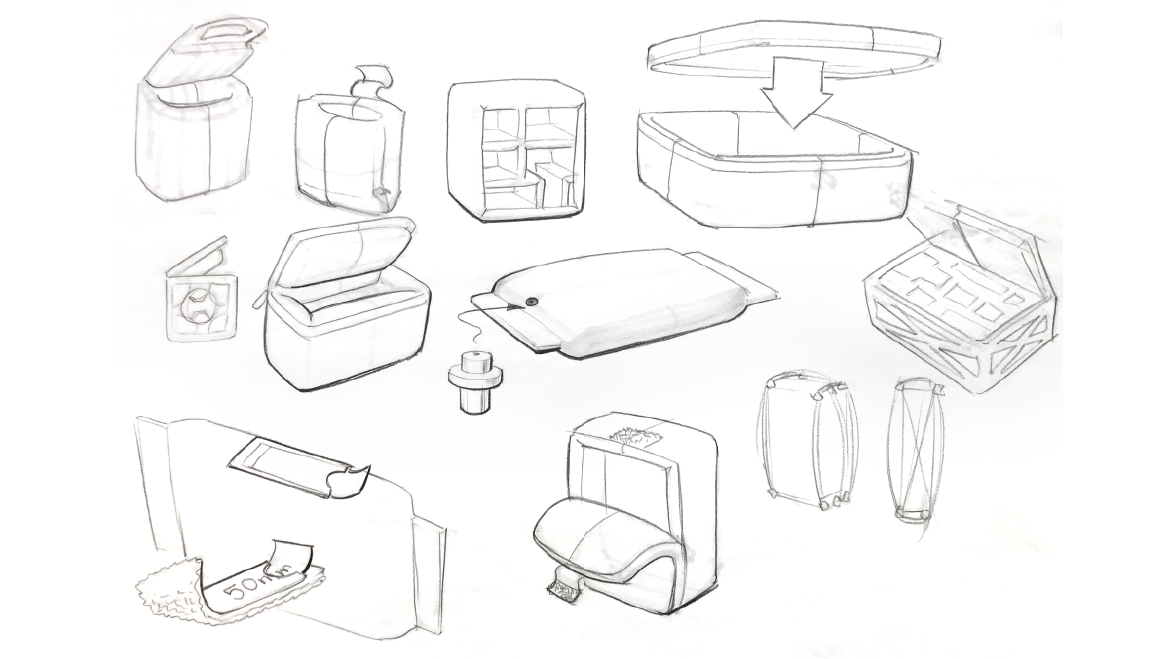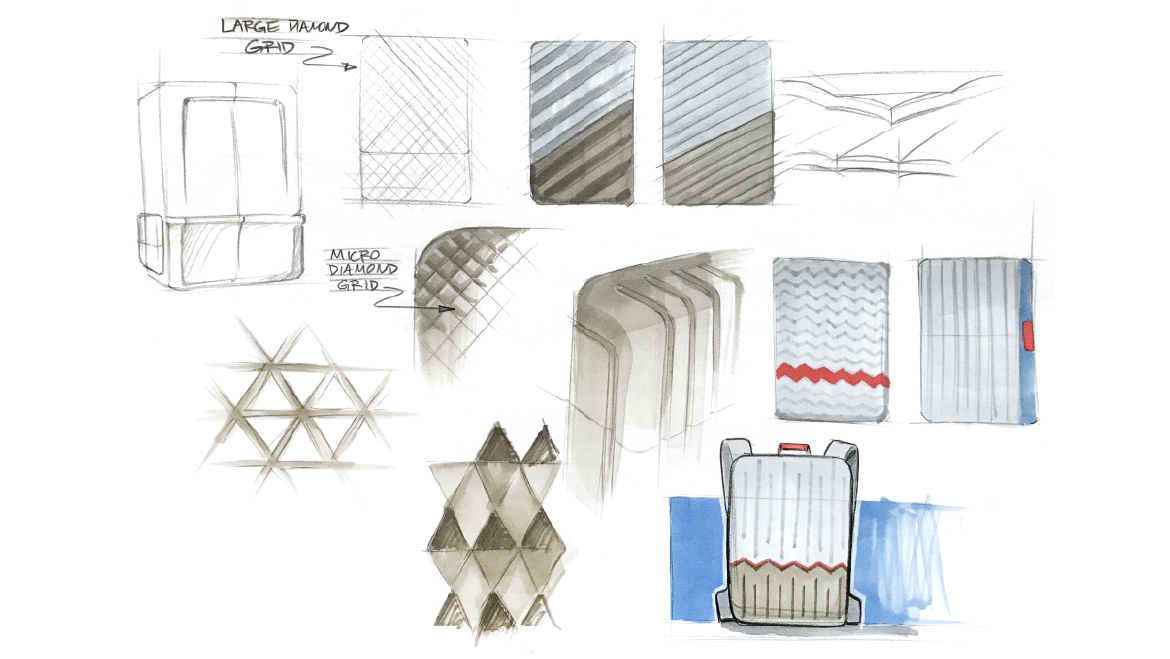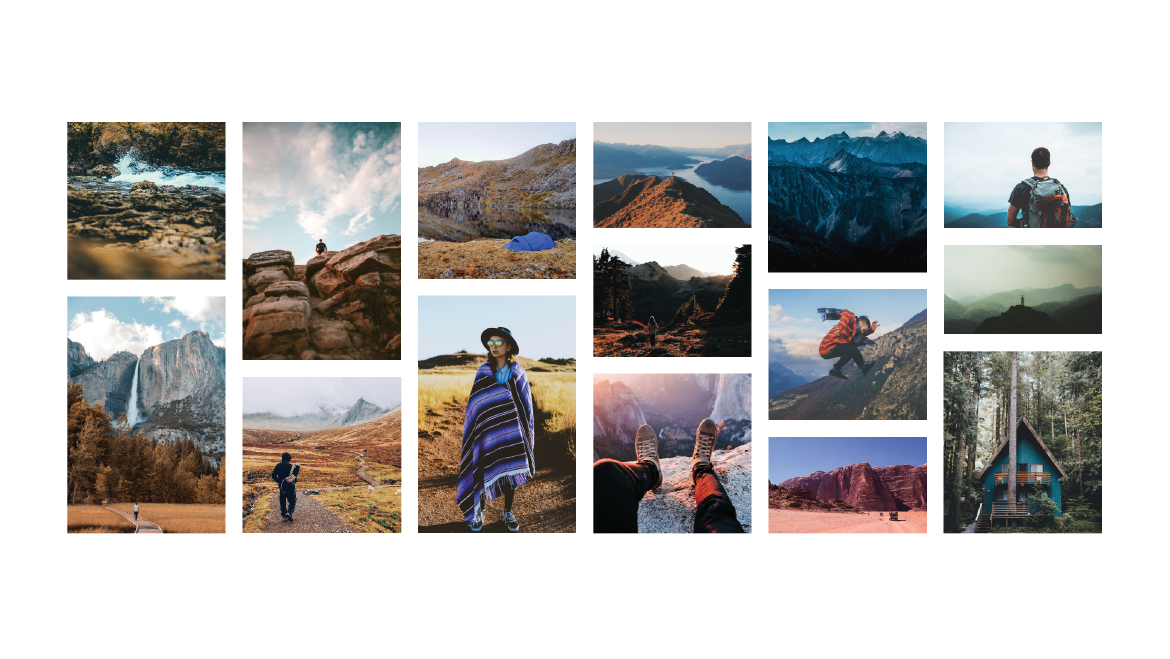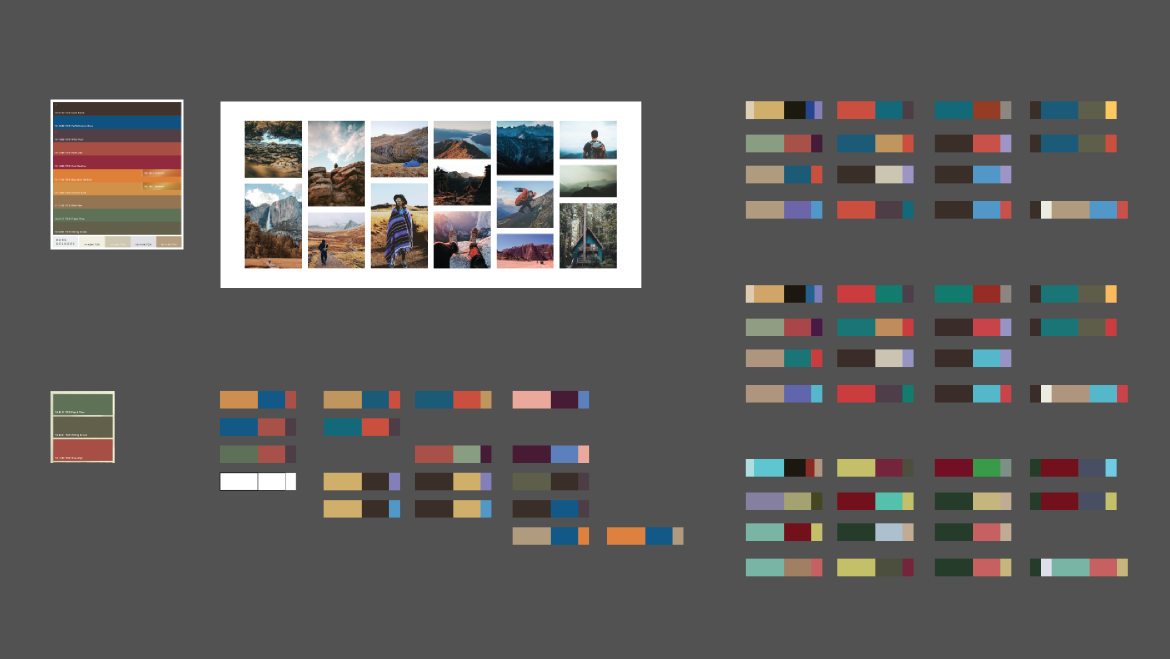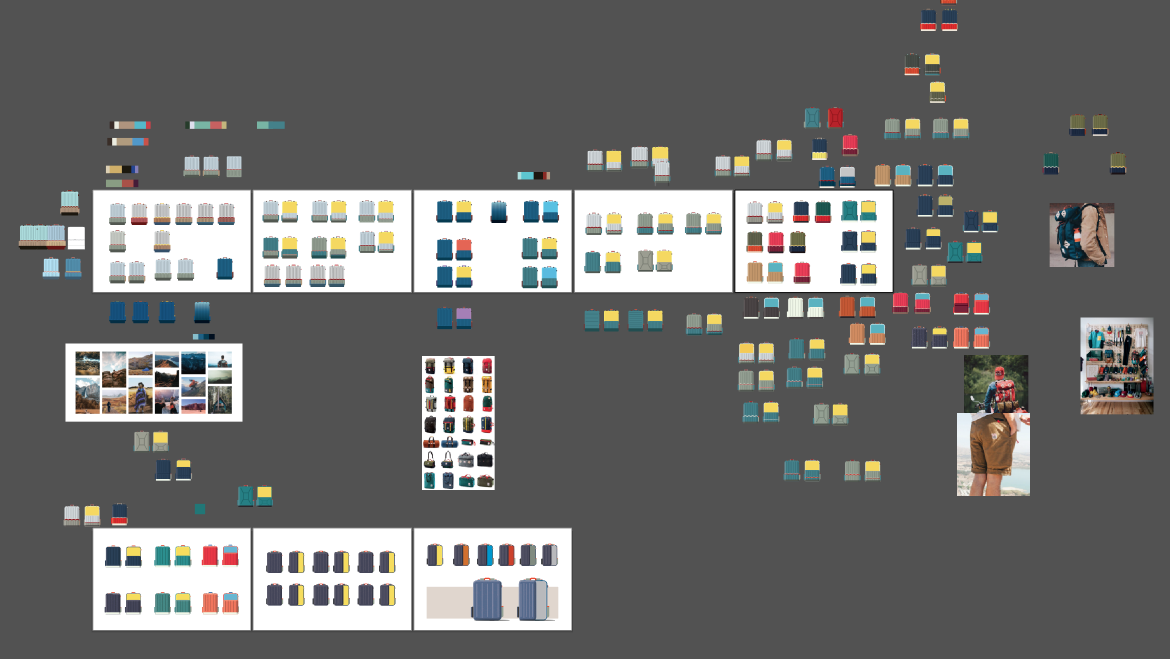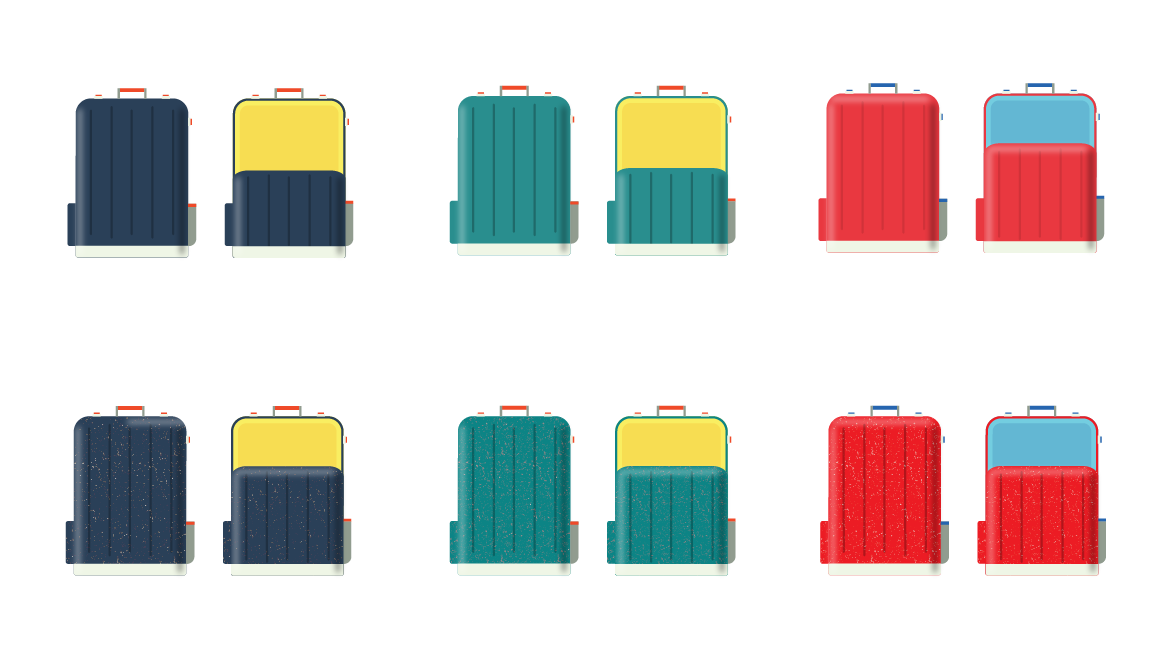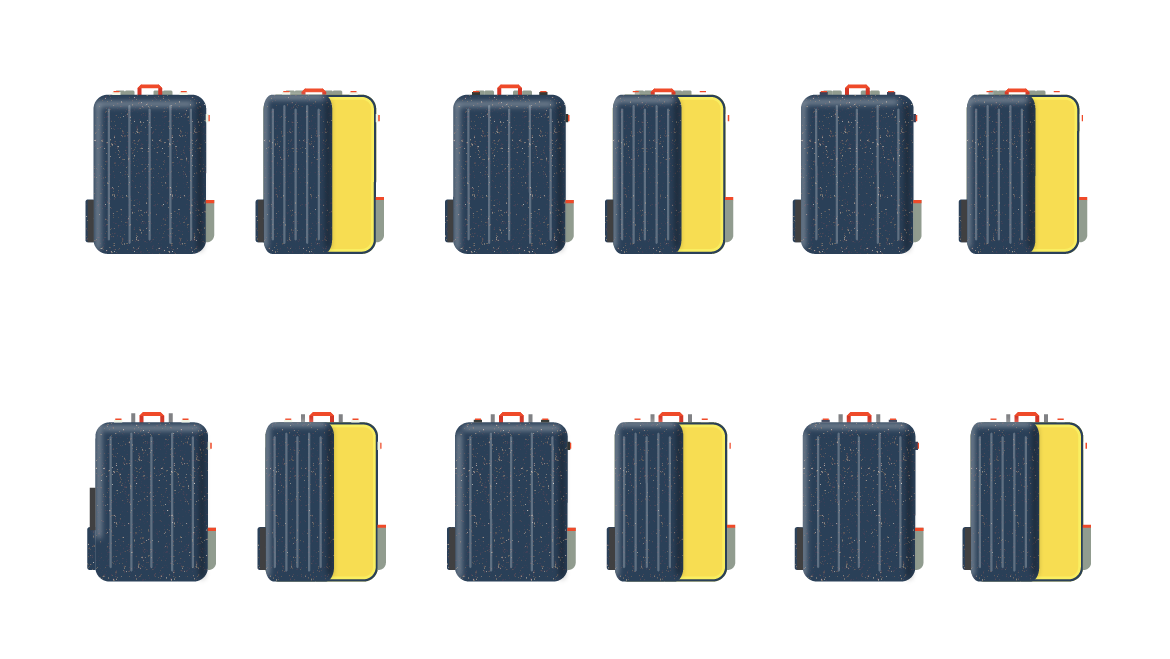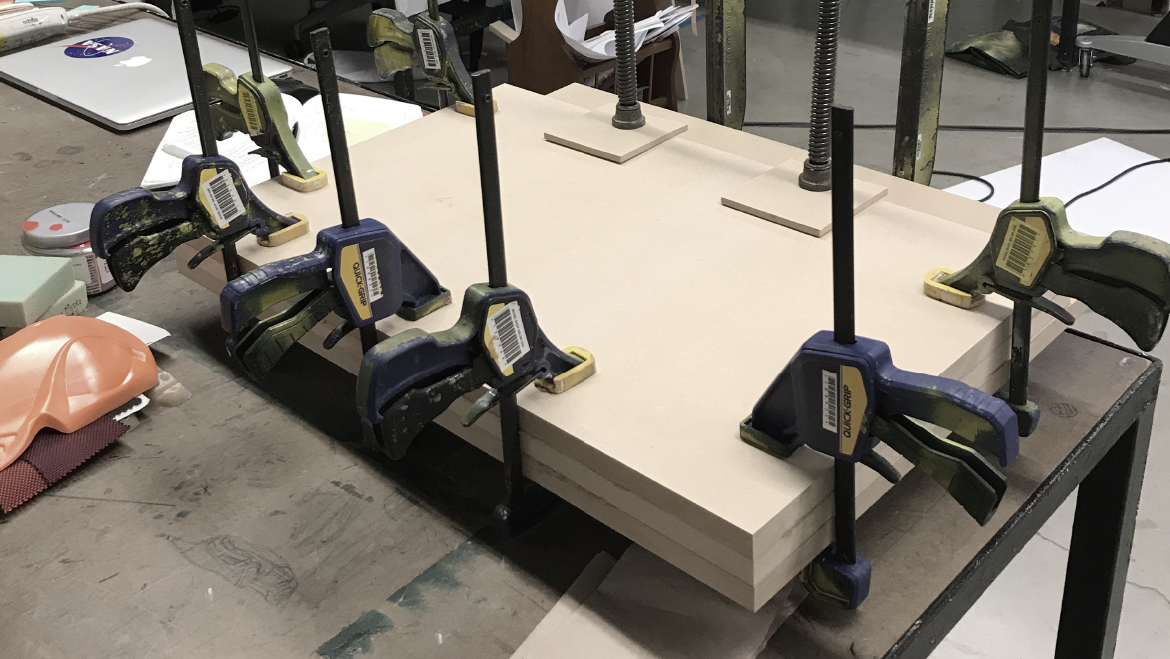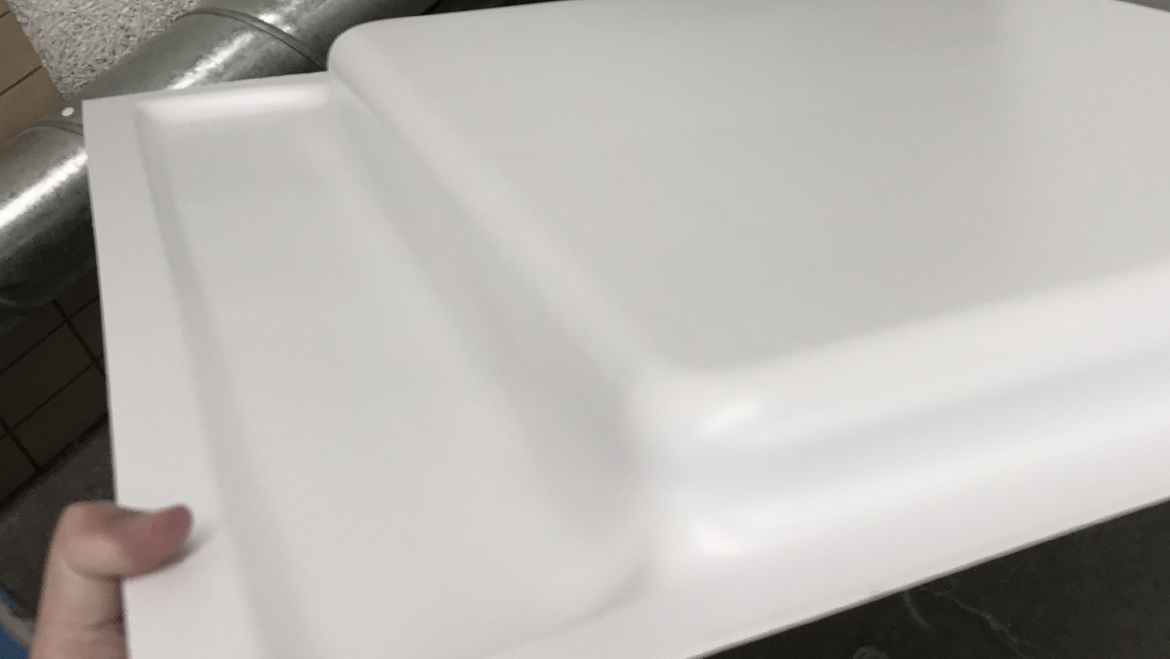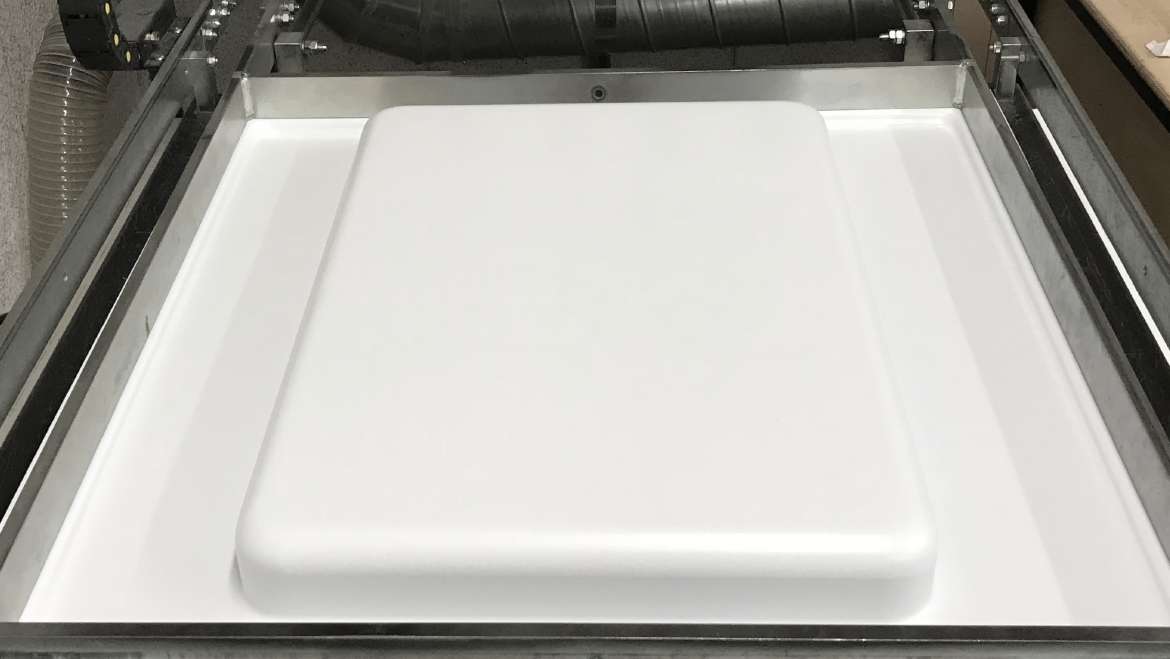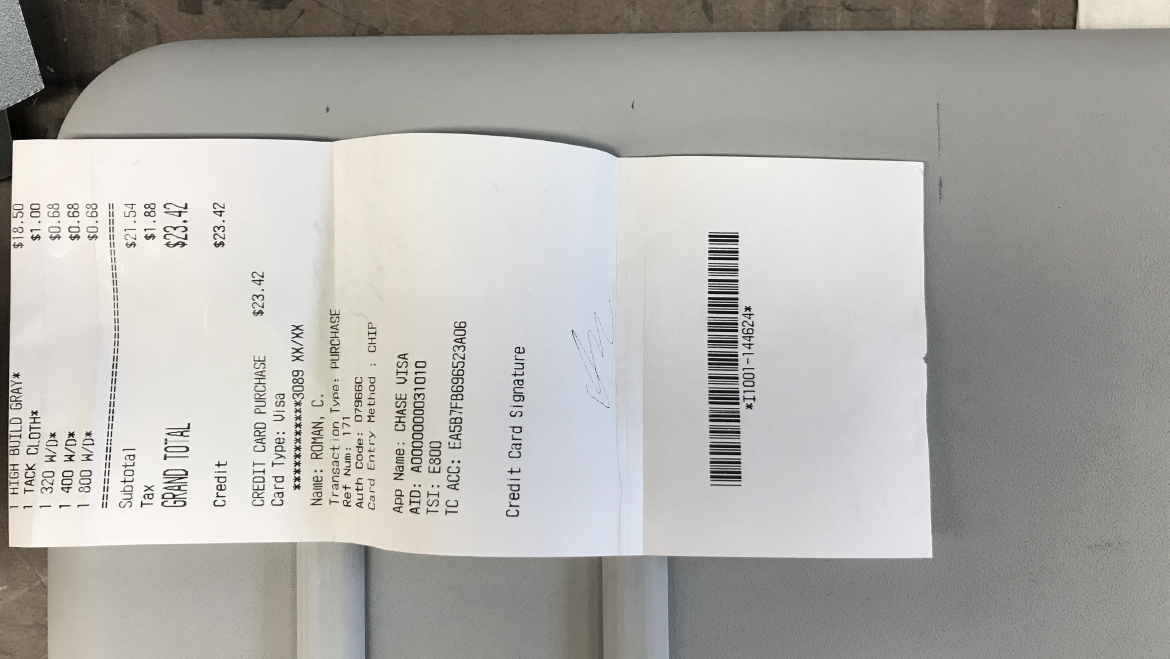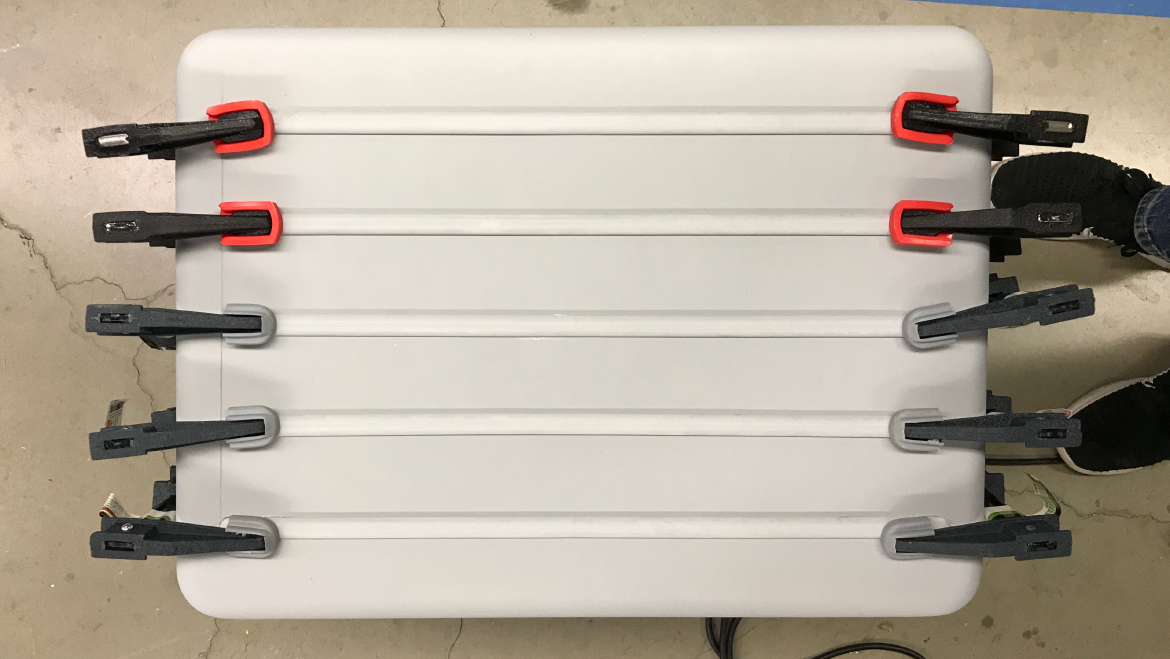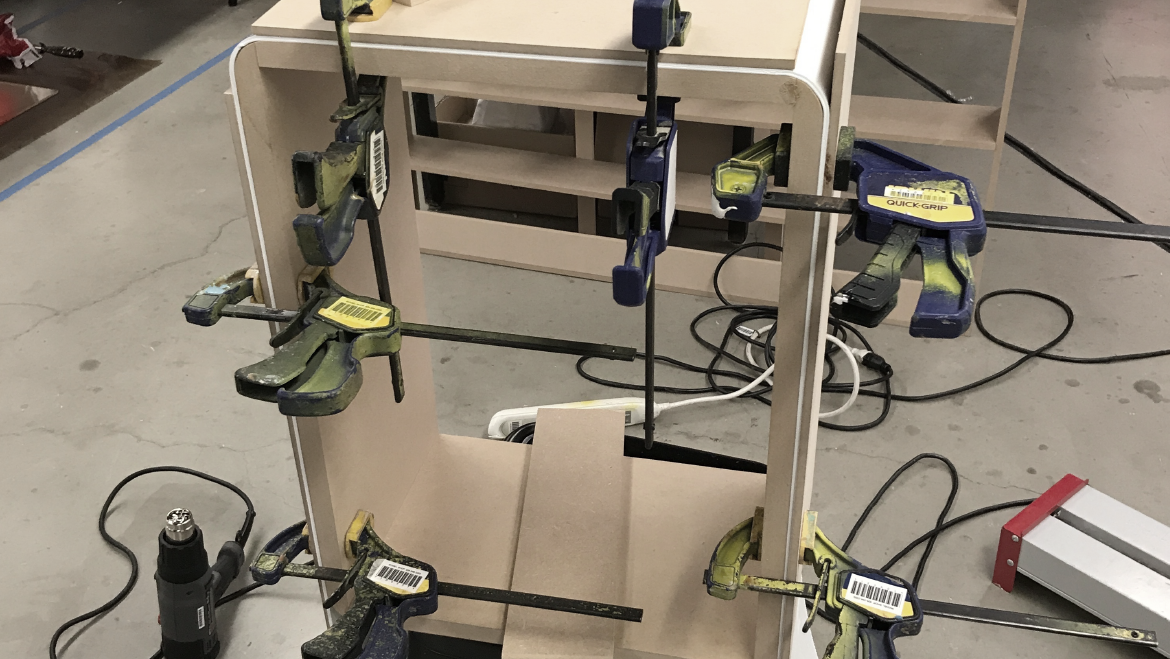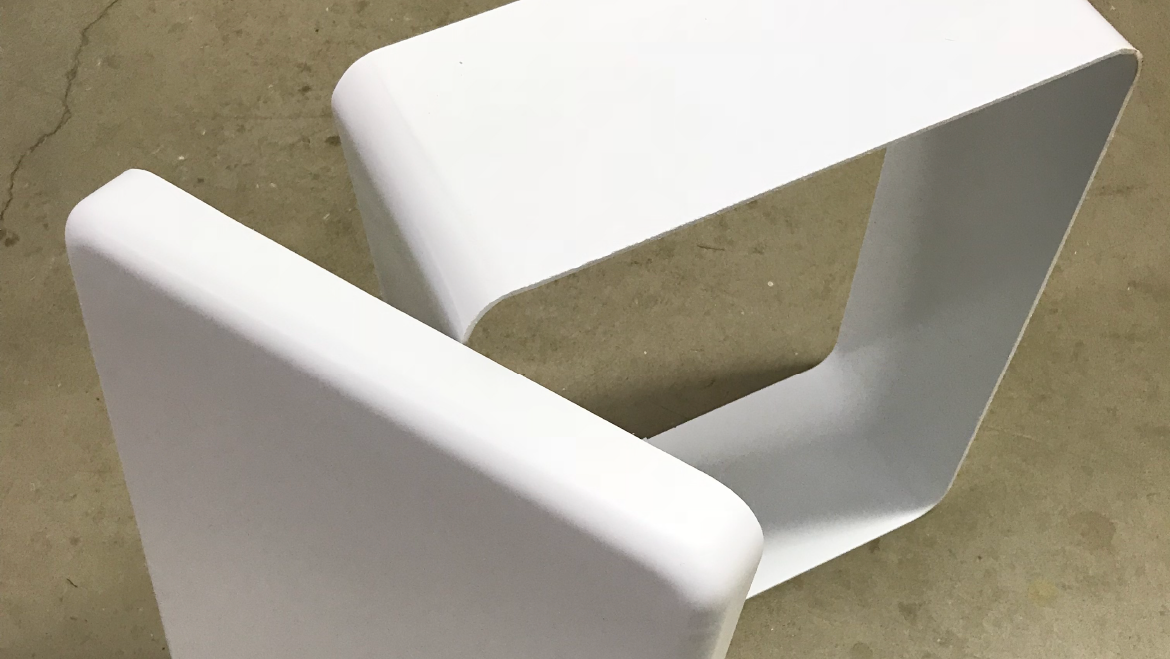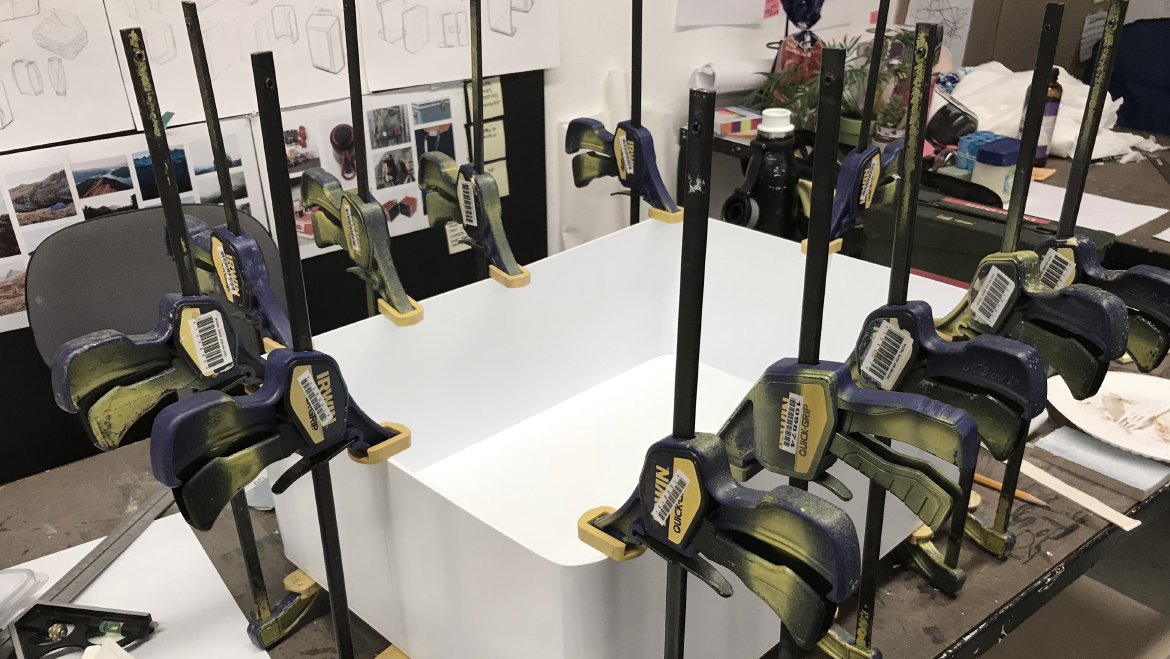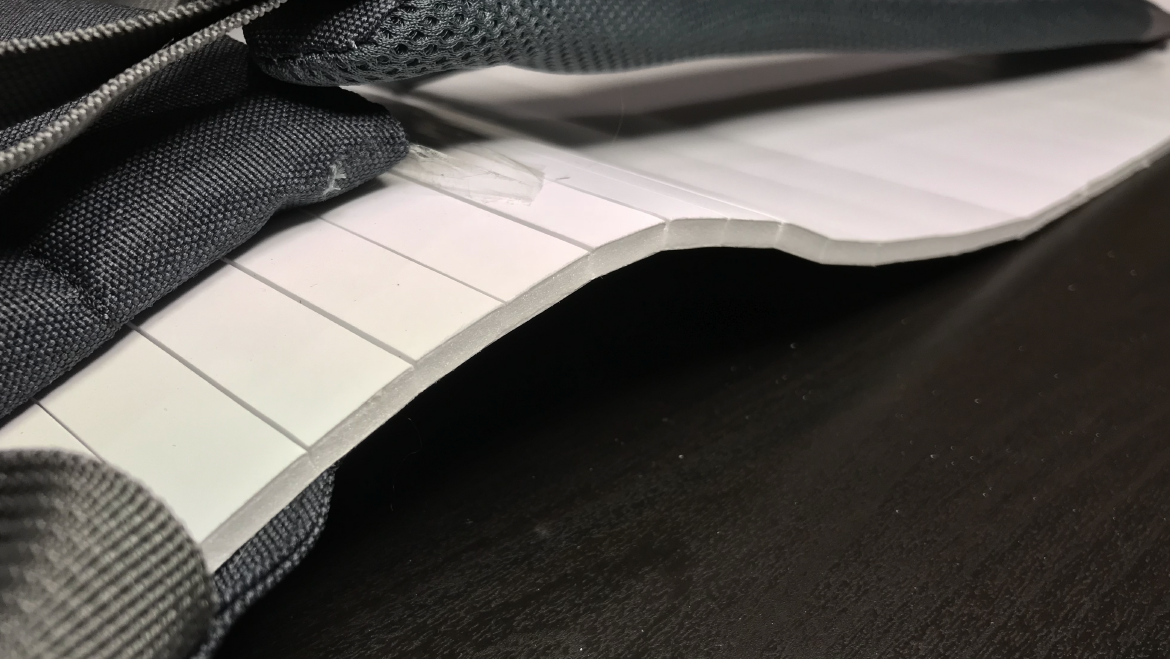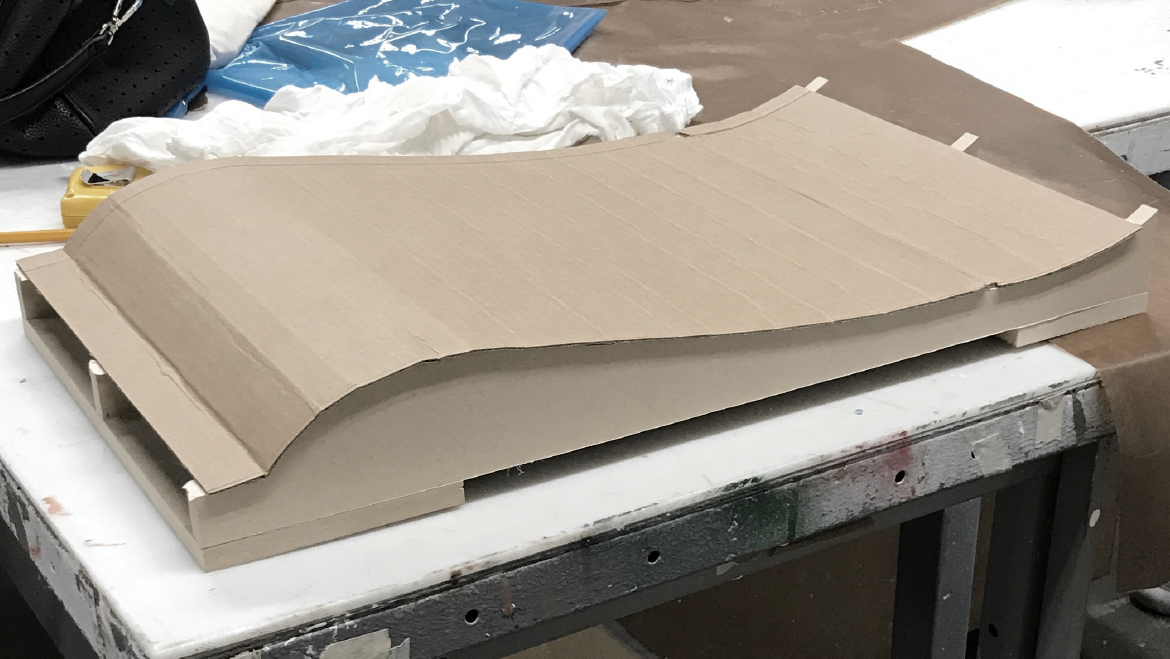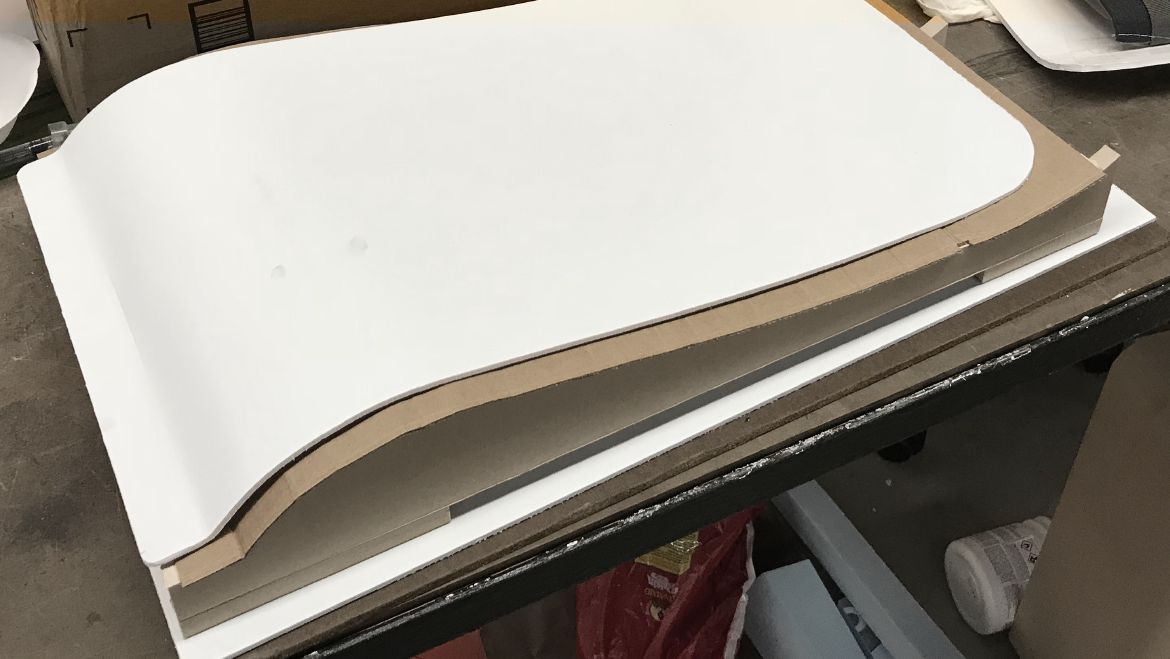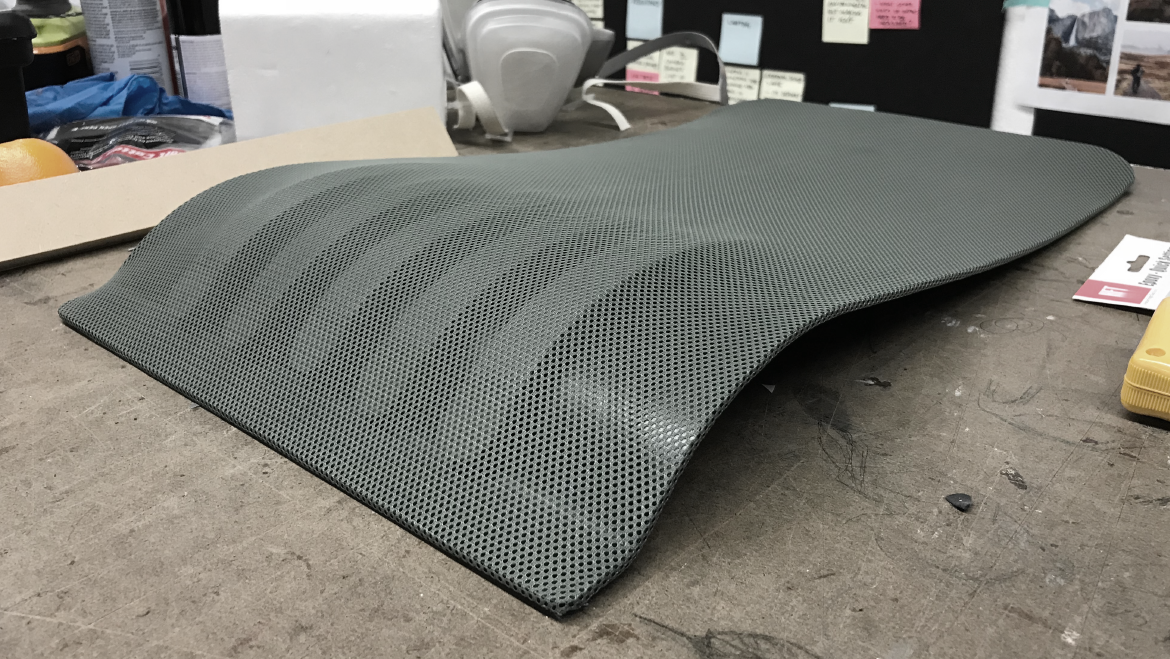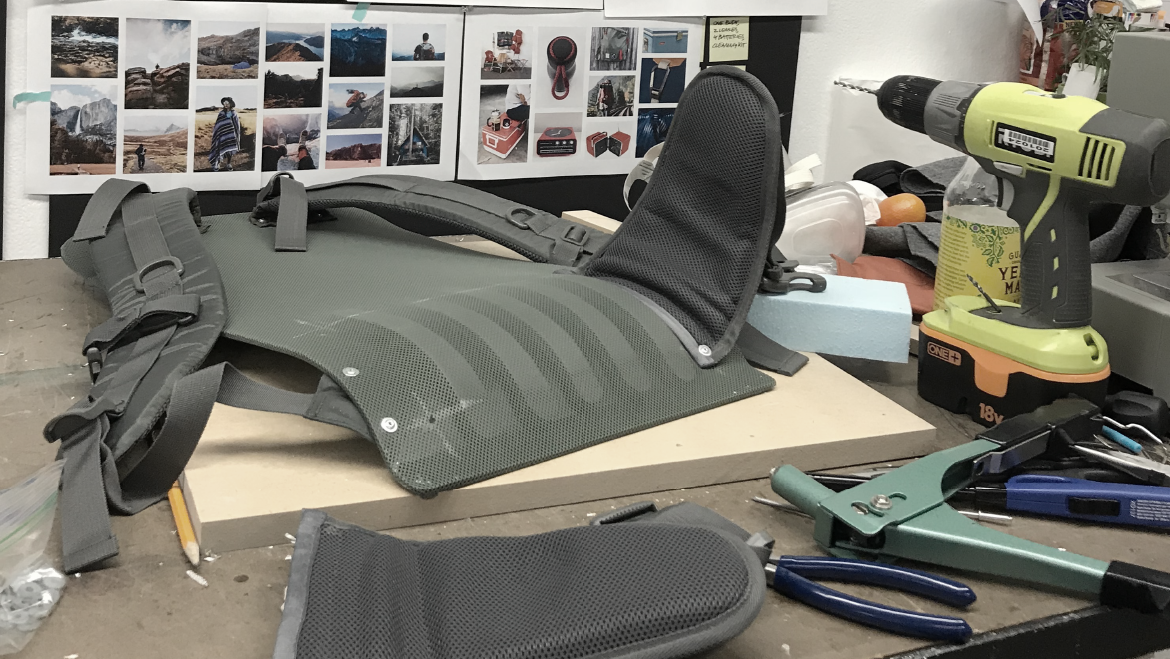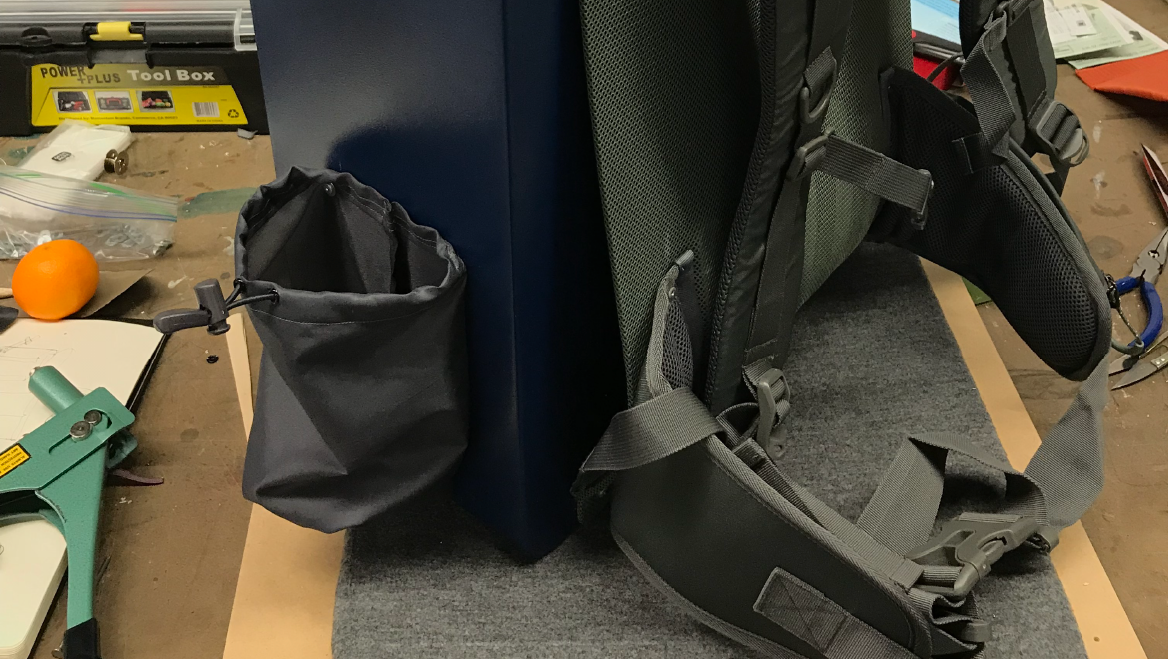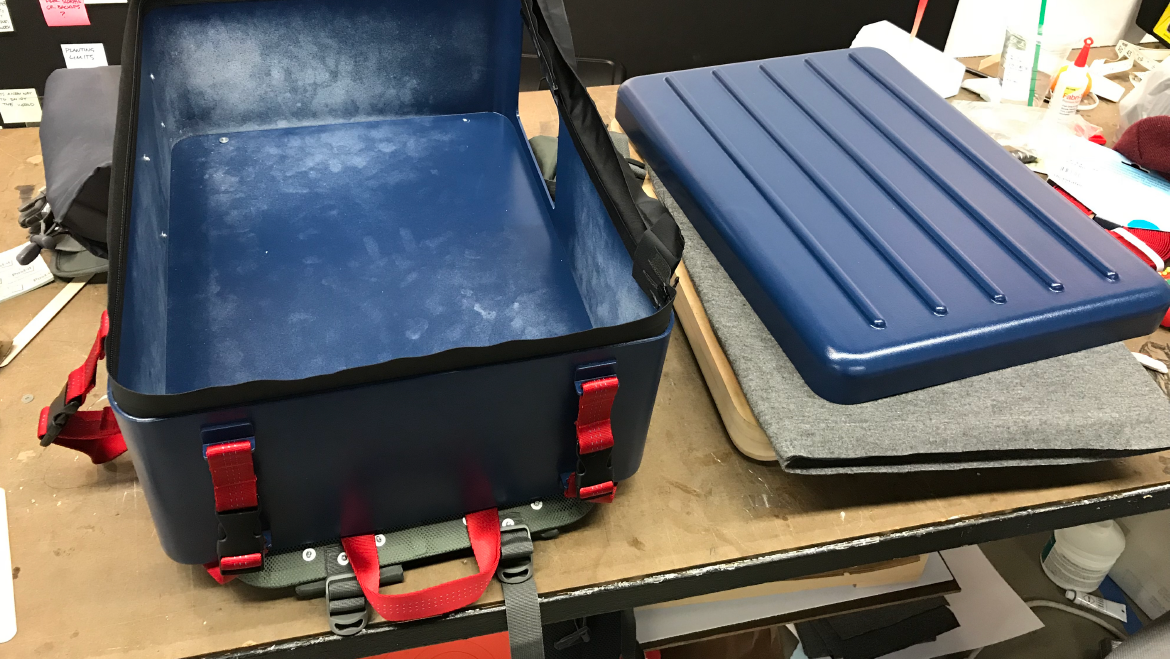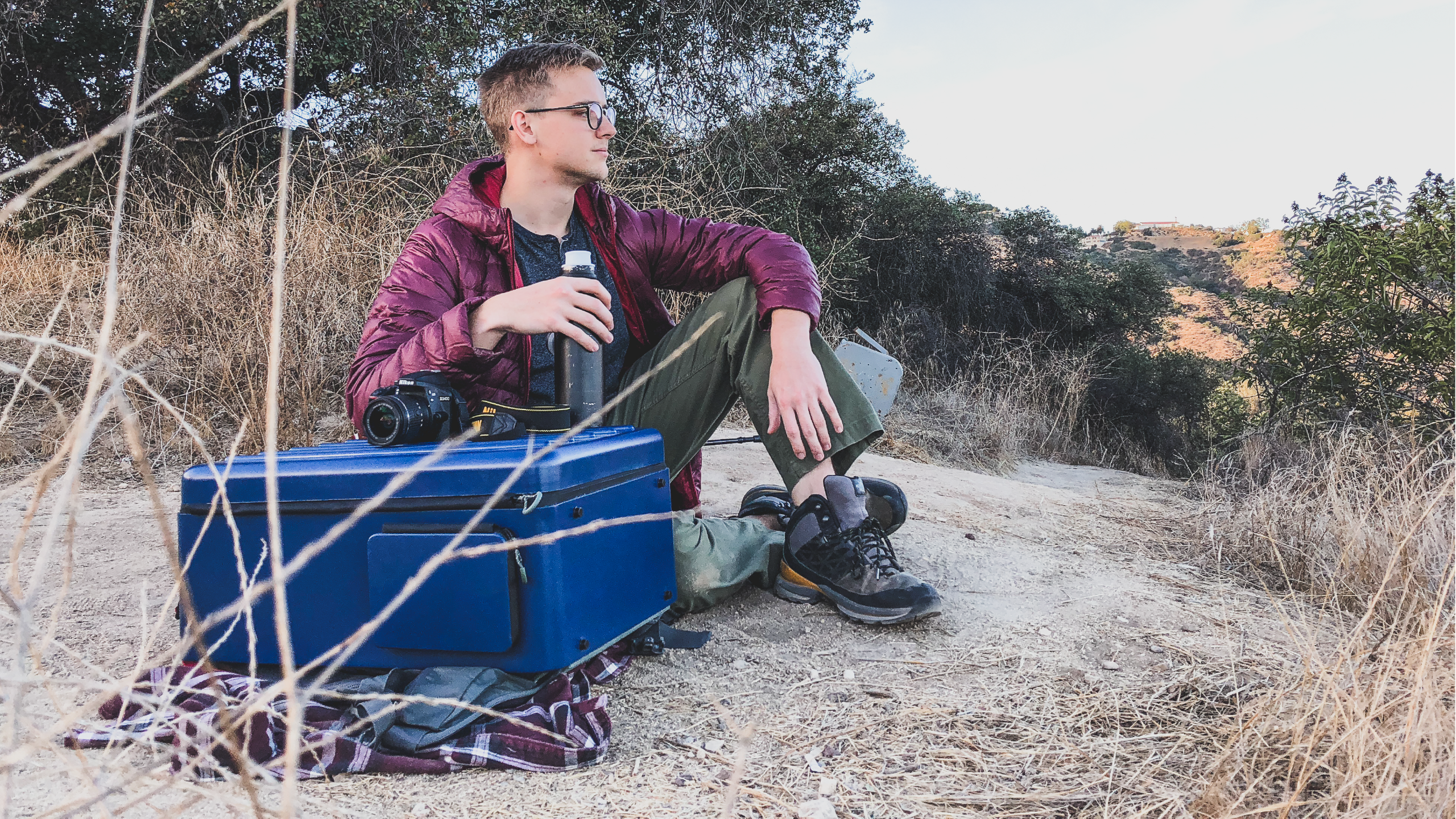TRAVOY
TRAVOY
PROCESS
Background
Protective gear for the adventure photographer's equipment, that lightens the load while increasing mobility and comfort.

Adventure Photography
Adventure Photography is one of the most popular fields of photography and the Outdoor Industry is becoming a significant economic driver in the United States.
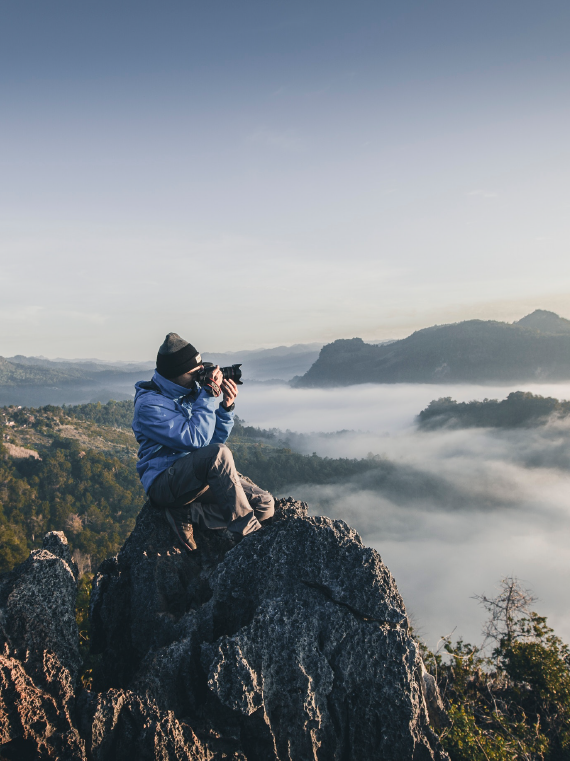
The Professional Adventure Photographer
“I love the challenge of something that’s really hard to see, let alone capture.”
23-35 years old
Passionate image maker.
Outdoor enthusiast.
DSLR purist.
Thrill Seeker.
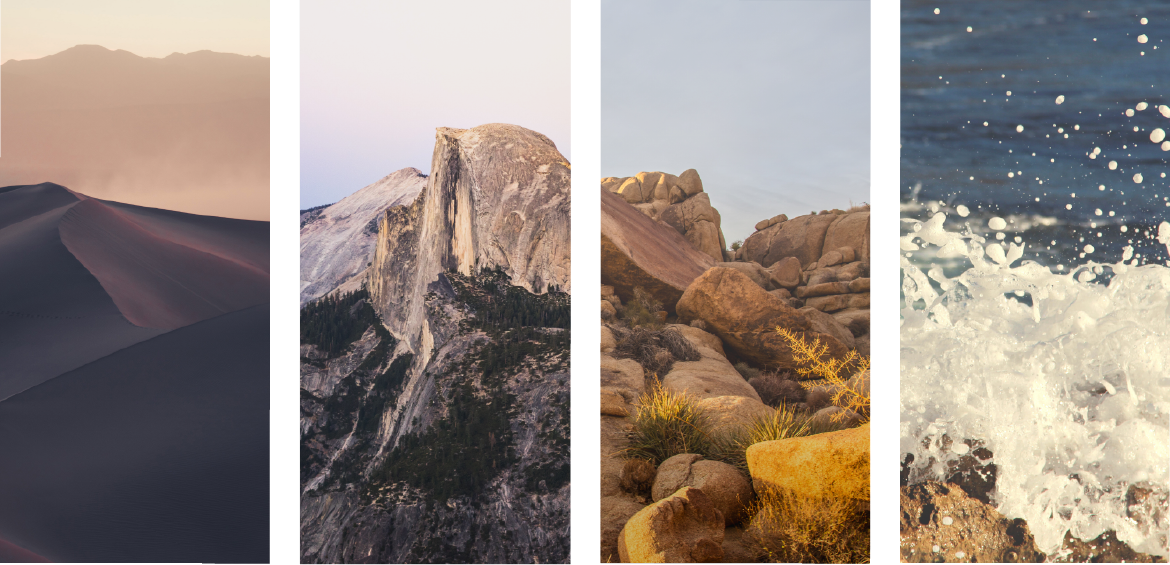
Adventure photographers go to many different types beautiful environments. These environments are harsh and can be a danger for the photographer's equipment. These trips are usually 2-5 days long.
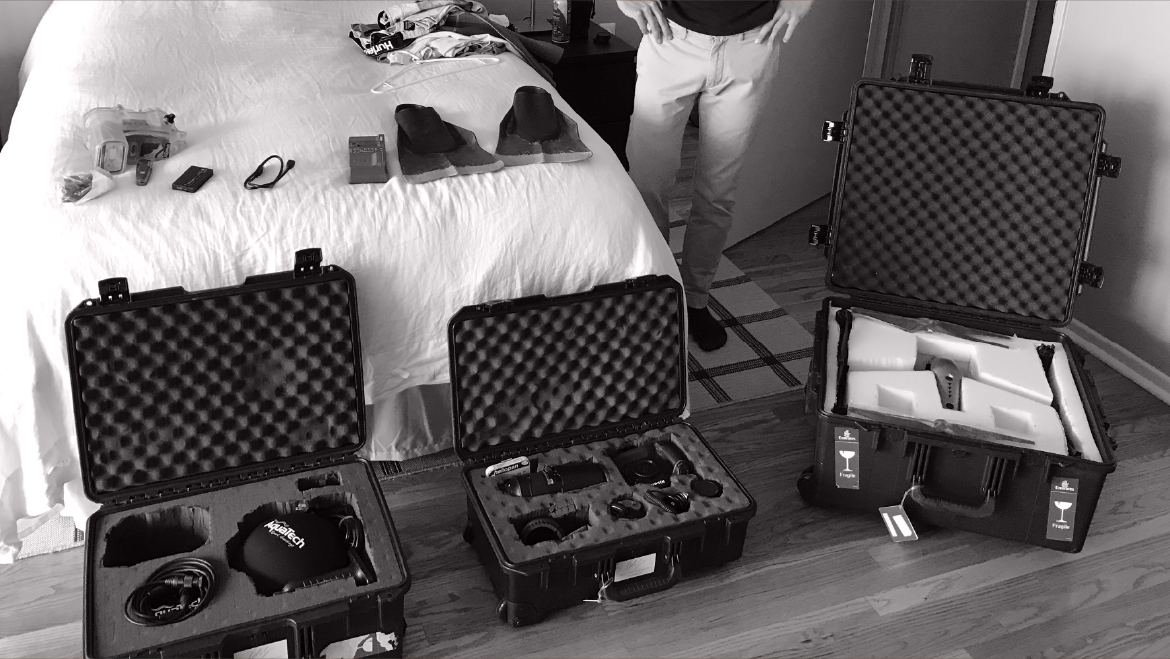
For a typical trip like this, the photographer has to cary 40 pounds of gear or more with them.
For a typical trip like this, the photographer has to carry 40 pounds of gear or more with them.
Insights
Protective gear for the adventure photographer's equipment, that lightens the load while increasing mobility and comfort.
“I basically want a pelican case with straps on it.”
“We stuff our waterproof bags with pelican case foam.”
In my research, these two statements are what alerted me to the fact that Pelican cases, the king of photo gear protection, was significantly inadequate for the professional Adventure Photographer.
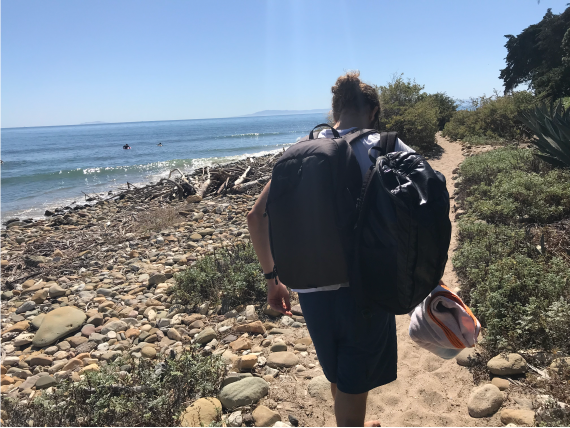
Using a Hard Case
Can only be carried with one hand.
Hart to roll over rough terrain.
Not very mobile.
Using a Soft Bag
Not 100% waterproof.
Not protective enough.
Many steps to access the camera.
Wearing on neck causes headaches.
Emotional Appeal
“Photography is an emotional Experience.”
Why can’t the equipment have an emotional appeal too?
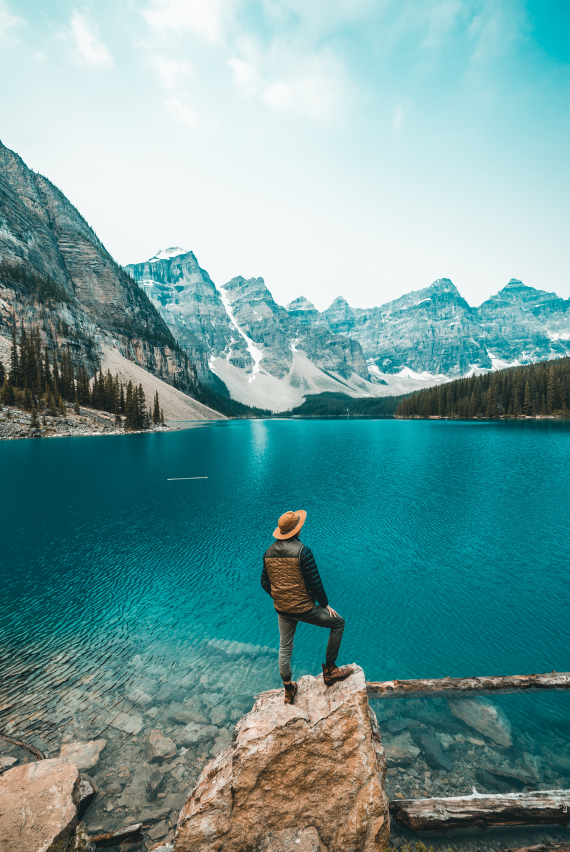
Function
Emotion
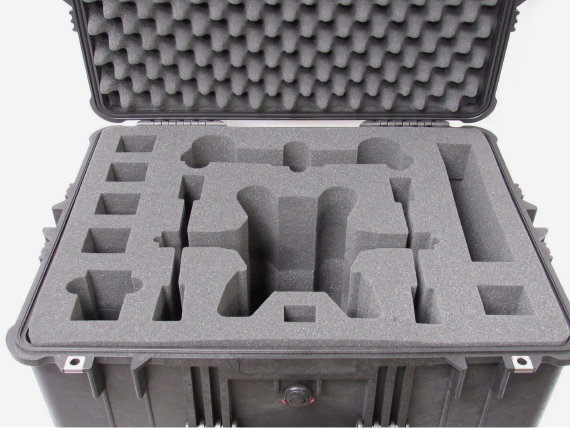

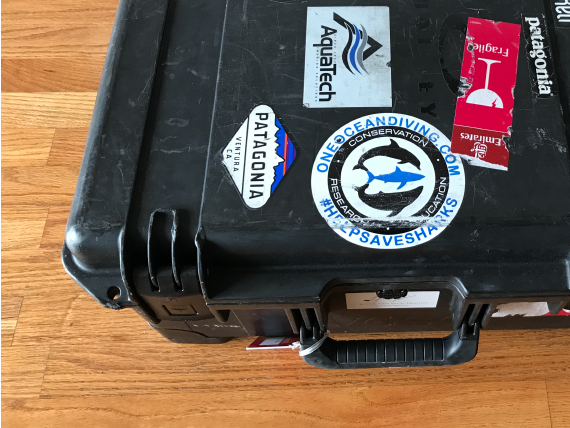

Currently, Everything on the market is only designed for function. Mostly they are giant, black, monoliths.
To contrast this, these photographers will cover their cases in stickers of places they've been and people they've worked with. To the right, every scar on this photographers fins, tells a story about its use and the photographer's experiences.
Versatility
“We pack our bags differently for every trip.”
Adventure Photographers need a versatile packing solution to account for their constant packing, unpacking, and reorganizing. This includes not just every trip but packing differently for every stage of the trip: car travel, plane travel, leaving from basecamp for different trails during the trip, and the return trip back home.


Long-Term Trends
“There’s nothing between an iPhone and a low-end DSLR.”
Having a versatile packing solution will also account for big changes due to long-term trends such as DSLR market space continually being consumed by the next iPhone.
Comfort

“If it can be comfortable, the weight doesn’t matter as much.”
Many backpacks made for long hikes and carrying lots of weight are made with contoured, form-fitting back support.

However, for some photography backpacks, this critical touchpoint is made into an opening for the pack.
"You can definitely tell when there's a camera lens stabbing you in the back."
Strategy Canvas
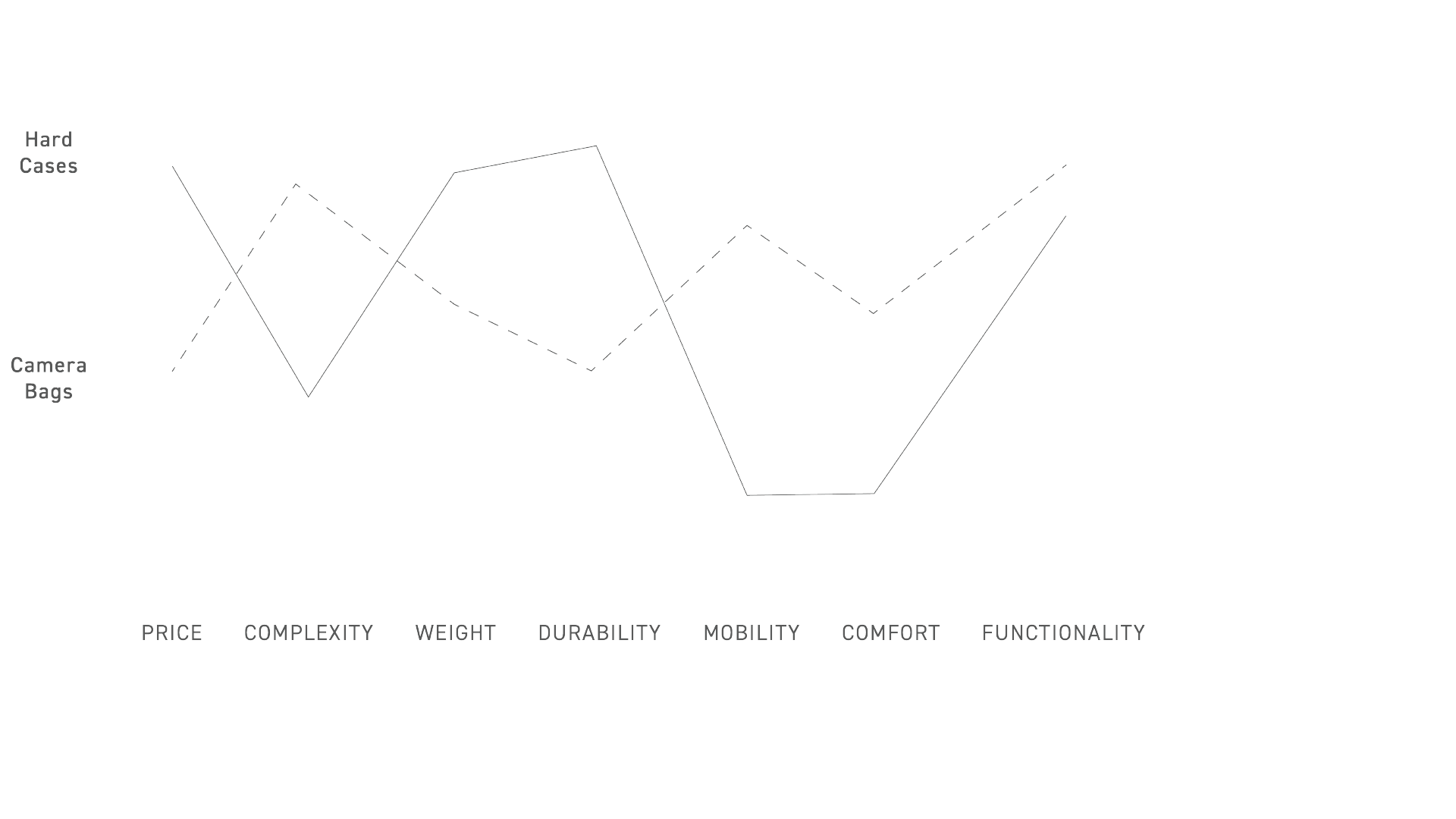
Currently, in the market, users have a choice of using a hard case or a soft camera bag. Hard cases are incredibly durable and functional but they're expensive, extremely heavy, not very mobile, and not very comfortable. Soft camera bags weigh less, are more mobile, and more comfortable but they're also super complex, not very durable.
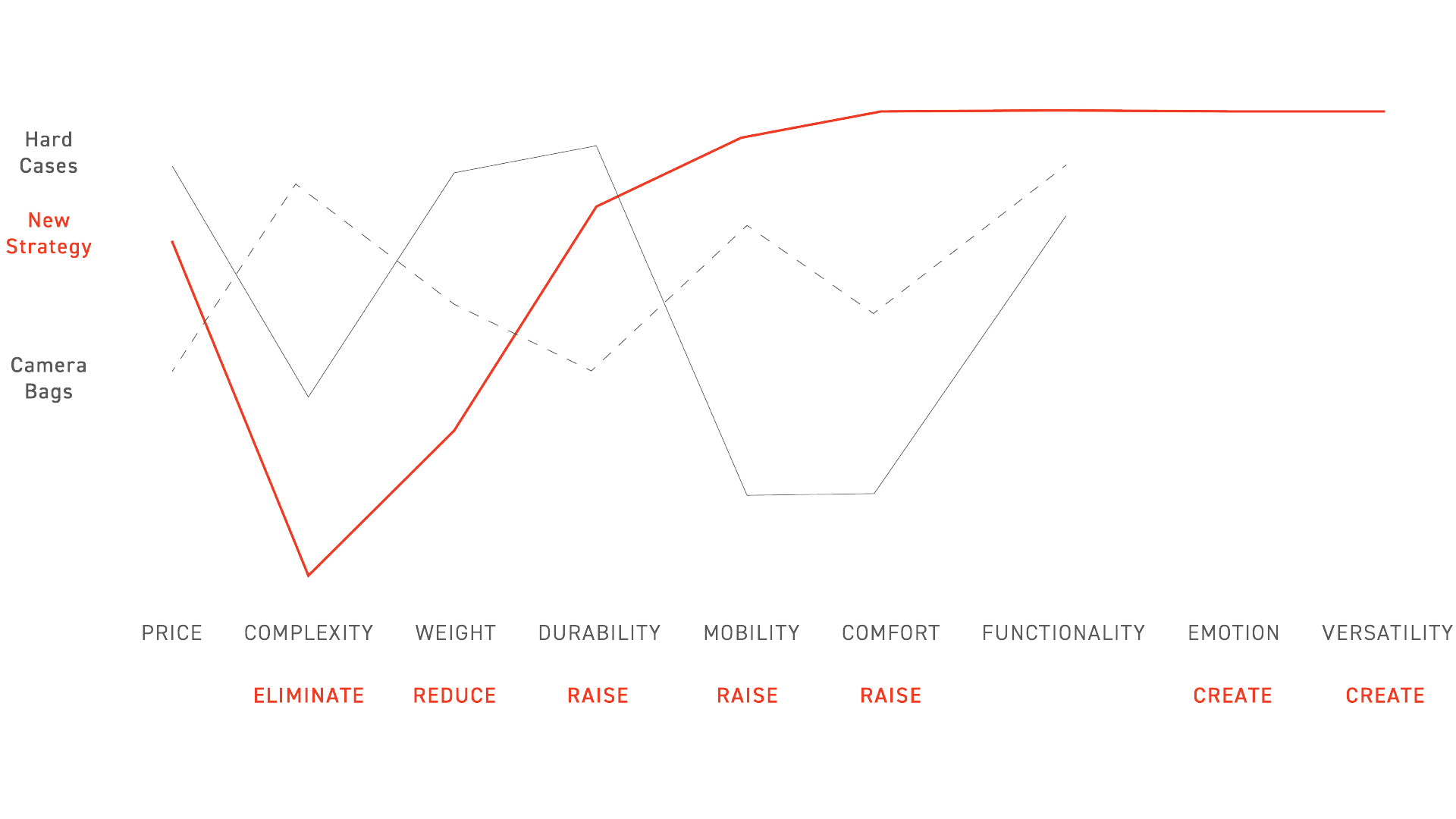
The new strategy is to eliminate complexity, reduce weight, rais durability, mobility, and comfort, and create an emotional appeal, and a versatile packing system.
Design Criteria
Must Have
Shock Absorption
Comfort
Mobility
Should Have
Lightweight construction
Emotional Appeal
Waterproof Seal
Crush Resistance
Versatile Packing
Tripod Storage
Could Have
Discrete aesthetic to avoid theft
Wont Have
Complexity
Concept Generation
Initial Exploration
Initial Solution Strategies
Rib Cage
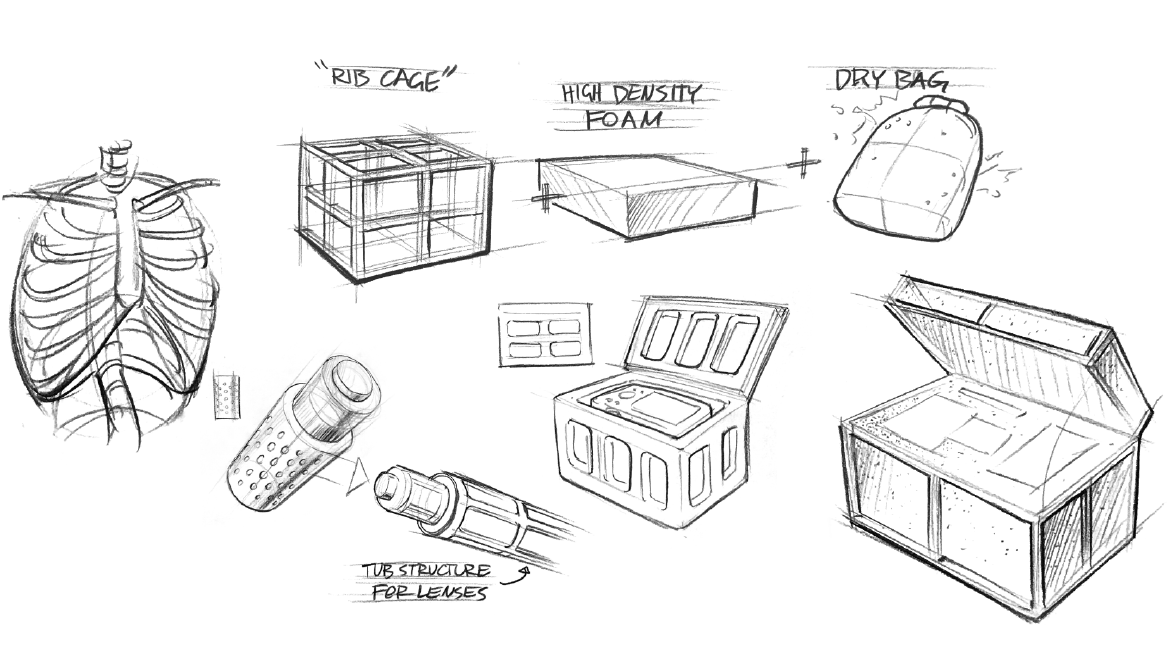
Air Bag
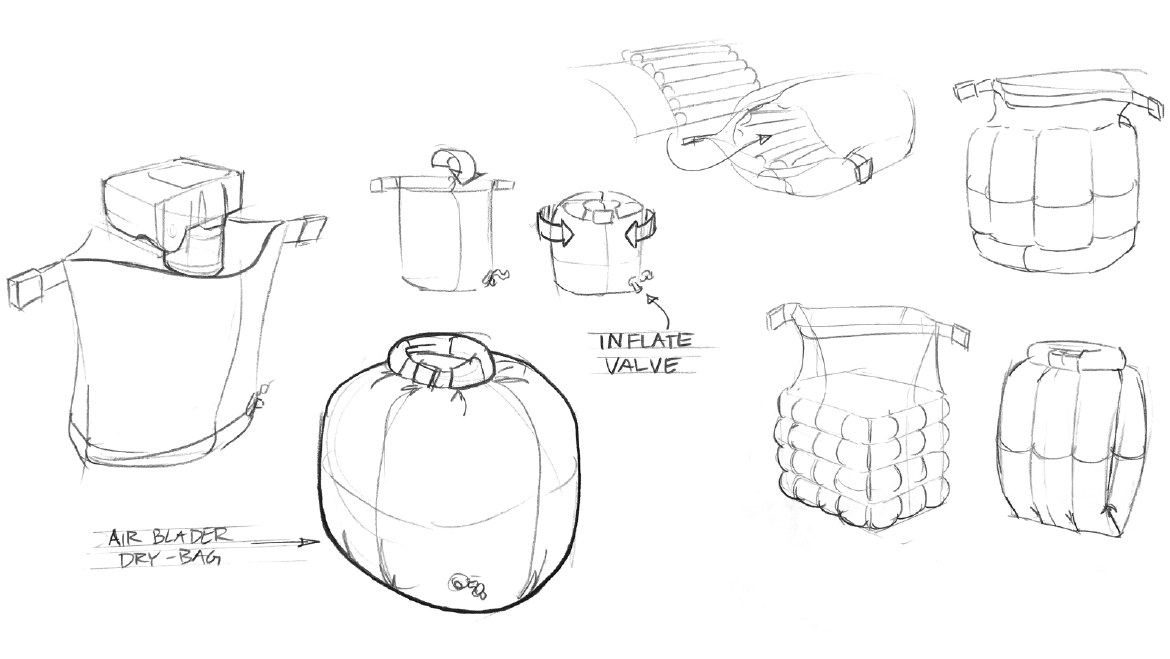
Soft Shell

Foam + Drybag

Refined Solution Strategies
Rigid Frame + Soft Pack + Inflatable padding.
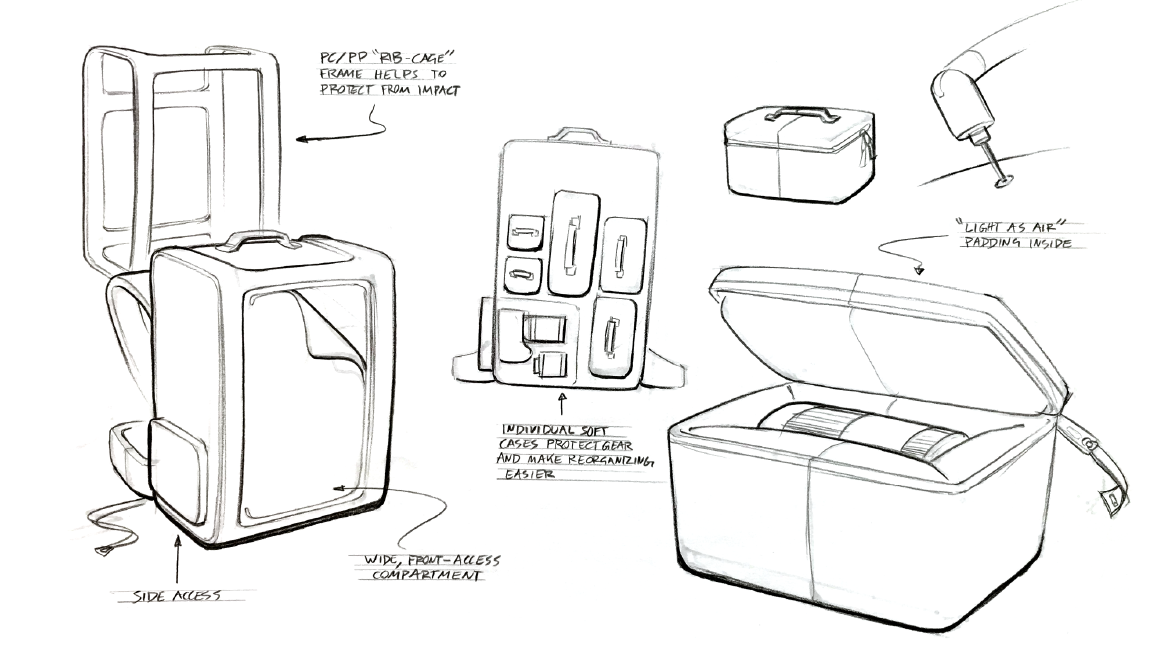
Soft Pack + Individual Hard Cases + Inflatable padding.
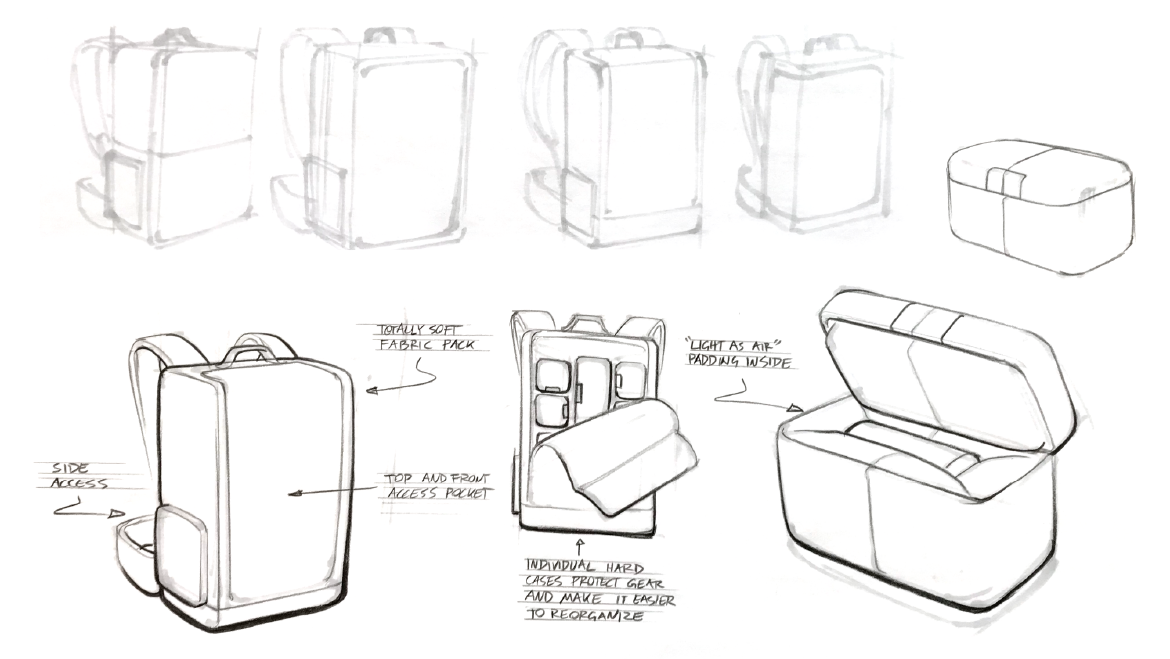
Complete Hard Shell + Inflatable padding + Less Velcro

After showing these concepts to some users and getting some feedback, the complete hardshell design with inflatable padding, and less velcro was the favorite. This design checked all the boxes for the design brief and users trusted in the integrity of this concept more than the others.
Refinement
The next step was to refine the form and all the small details.
Color and Pattern Exploration
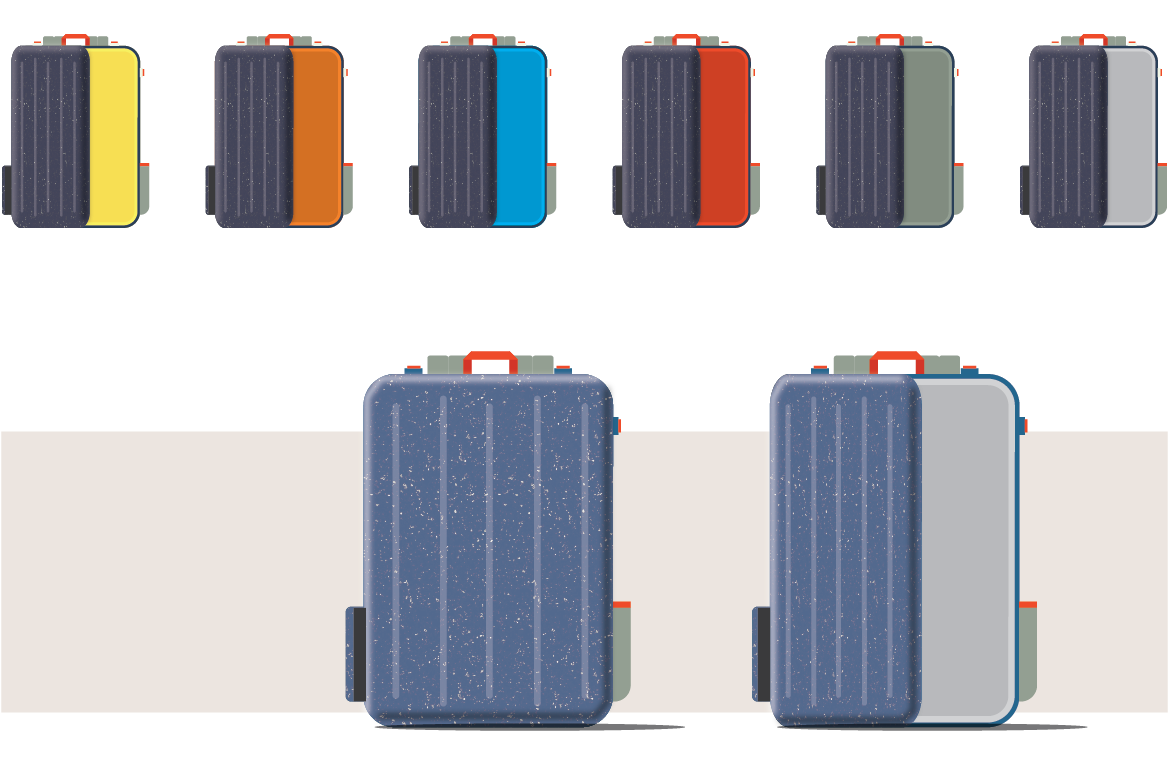
Prototype Build
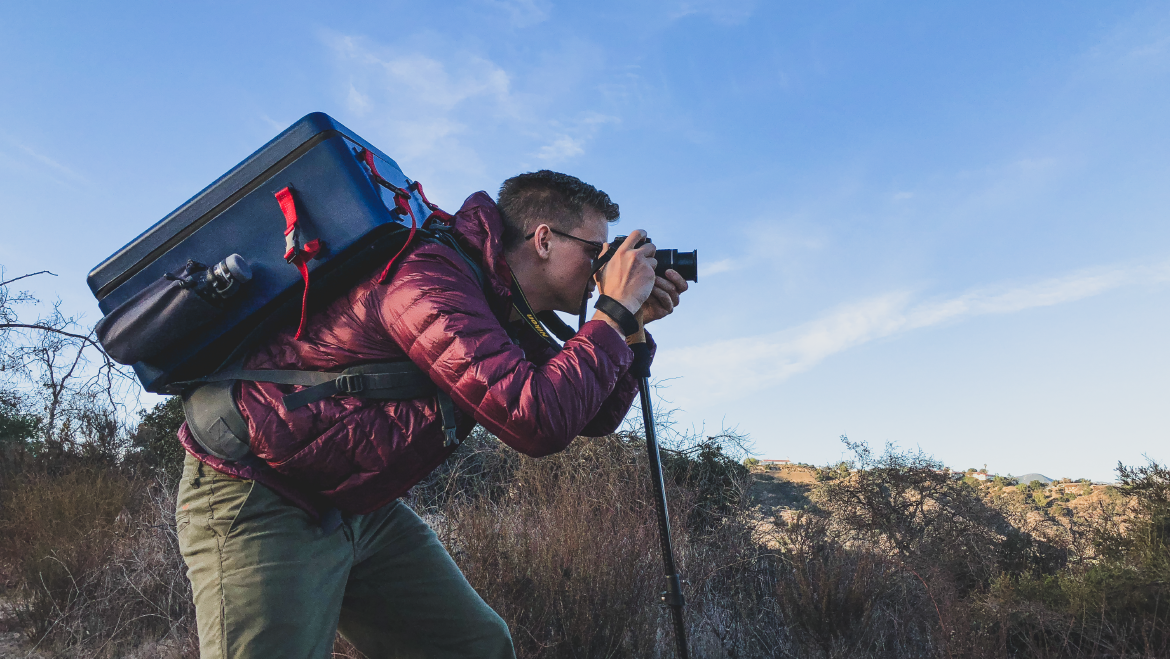
PEACE OF MIND
HIGHER SUMMITS
BETTER SHOTS
PEACE OF MIND
HIGHER SUMMITS
BETTER SHOTS
All works © Christiahn Roman 2017

